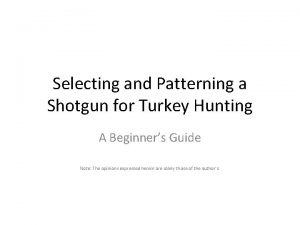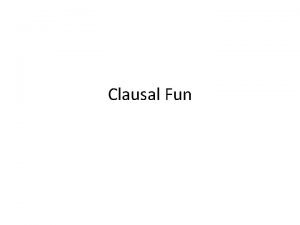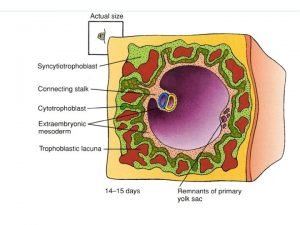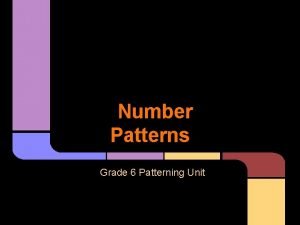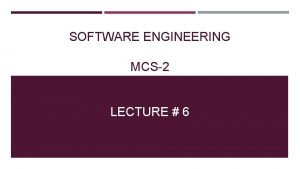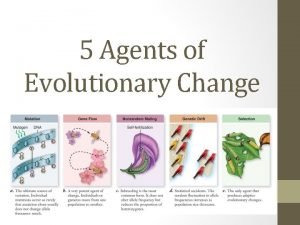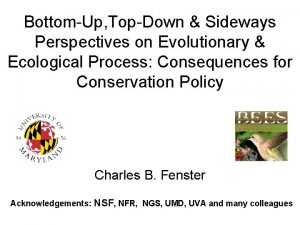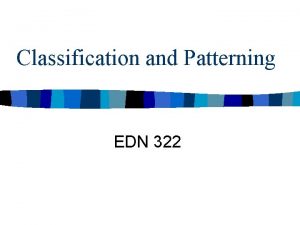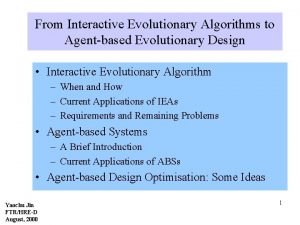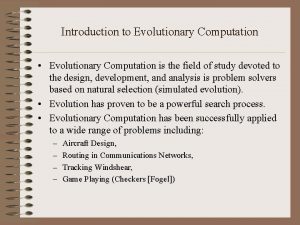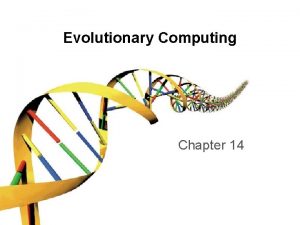Natural Selection Evolutionary Patterning Natural Selection Natural Selection













- Slides: 13

Natural Selection & Evolutionary Patterning


Natural Selection • Natural Selection acts on VARIATIONS • Stabilizing Selection: conditions favor intermediate variants rather than extremes • Directional Selection: conditions favor individuals at one extreme • Disruptive Selection: conditions favor individuals at both extremes


Which of these modes represents which type of selection? What conditions might account for the observed types of selection among mouse populations?

Sexual Selection: Intrasexual vs. Intersexual Selection

Intrasexual – competition among individual within one of the sexes (same sex competes for mates of the opposite sex) Ex: male-male competition among elk for access to females Intersexual – selection between the sexes (mate choice) Ex: female choice (peahens ) for most vibrant & “showy” males (peacocks)

• Evolutionary Patterns Adaptive Radiation: common ancestral species evolves into many different species as populations move into new/ different habitats and have adaptations provide a “best-fit” with environment • Example: Darwin’s finches – certain beak types proved more advantageous for procuring food within a particular habitat

Evolutionary Patterns • Divergent Evolution: species that were once similar to ancestral species become increasingly more diversified; results in homologous structures

Evolutionary Patterns • Convergent Evolution: unrelated species evolve similar traits because they occupy similar environments in different parts of the world • Similar environmental pressures result in analogous structures (Ex: aquatic habitat favors streamlined body plan and flipper-like appendages)


Evolutionary Patterns • Coevolution – evolution of one species affects the evolution of another species due to a close ecological relationship between the two species • • Ex: mutualism – many plants have evolved to produce fruits that are consumed by certain organisms so that seeds can be dispersed A parasitic relationship is known as “coevolutionary arms race” – plants evolve a chemical defense against pests and pests in turn evolve to resist the defense

Rates of Speciation • Speciation can occur quickly or slowly • • Gradualism: species originate through a gradual change of adaptations over very long periods of time; many transitional species between ancient ancestor and modern-day species Punctuated Equilibrium: speciation occurs relatively quickly, in rapid bursts, with long periods of genetic equilibrium in between
 Why do hunters pattern their shotguns
Why do hunters pattern their shotguns Sentence patterning chart
Sentence patterning chart Syntactic listing
Syntactic listing What is mutual patterning
What is mutual patterning Left right patterning
Left right patterning Number patterns grade 6
Number patterns grade 6 Directional selection
Directional selection Artificial selection vs natural selection
Artificial selection vs natural selection Natural selection vs artificial selection
Natural selection vs artificial selection Natural selection vs artificial selection
Natural selection vs artificial selection Difference between continuous and discontinuous variation
Difference between continuous and discontinuous variation Evolutionary software process models
Evolutionary software process models 5 agents of evolutionary change
5 agents of evolutionary change Evolutionary process
Evolutionary process
